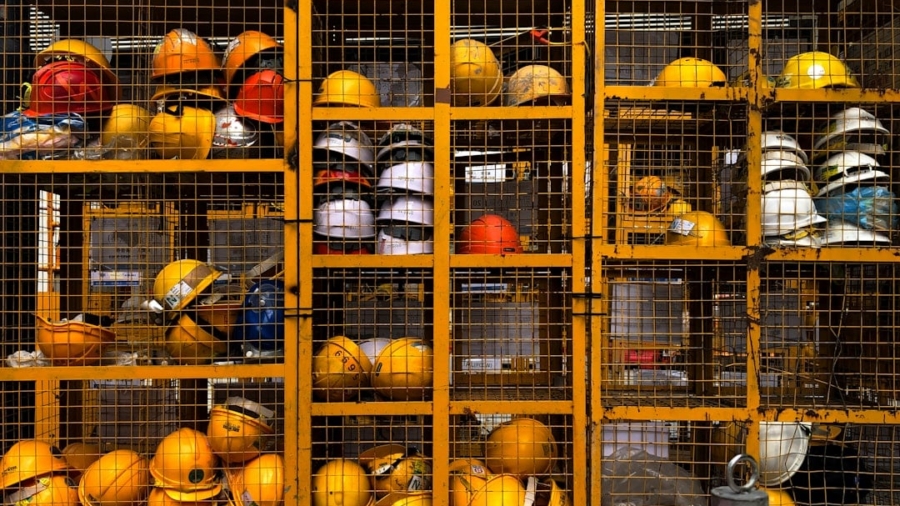The advent of automation in factories marks a significant turning point in the industrial landscape, reshaping how goods are produced and how labor is organized. Automation encompasses a wide range of technologies, from simple mechanical devices to sophisticated artificial intelligence systems, all designed to perform tasks with minimal human intervention. This transformation has been driven by the need for increased efficiency, reduced costs, and improved product quality.
As industries strive to remain competitive in a global market, the integration of automated systems has become not just an option but a necessity. In recent years, the conversation surrounding automation has expanded beyond productivity and cost-effectiveness to include critical considerations about worker safety.
As factories increasingly adopt robotics, machine learning, and other advanced technologies, understanding the implications for worker safety becomes paramount.
Key Takeaways
- Automation in factories has revolutionized the way work is done, leading to increased efficiency and productivity.
- Historically, automation has been linked to improvements in worker safety, reducing the risk of accidents and injuries.
- The impact of automation on workplace safety is significant, with the potential to minimize human error and exposure to hazardous conditions.
- Automated systems offer advantages such as improved precision, reduced physical strain on workers, and the ability to handle dangerous tasks.
- Despite its benefits, automation also presents challenges and limitations in enhancing worker safety, such as the need for regular maintenance and potential job displacement.
Automation and Worker Safety: A Historical Perspective
The Industrial Revolution and the Rise of Mechanization
The Industrial Revolution marked the beginning of significant mechanization in factories, leading to increased production capabilities but also introducing new hazards for workers. Early machines were often dangerous, lacking safety features that are now standard. Workers faced risks from moving parts, high temperatures, and toxic substances, leading to injuries and fatalities.
Advancements in Automation and the Evolution of Workplace Safety
As industries evolved, so too did the understanding of workplace safety, prompting the introduction of regulations and safety standards. The late 20th century saw a shift towards more sophisticated automation technologies, including programmable logic controllers (PLCs) and computer numerical control (CNC) machines. These advancements not only improved efficiency but also began to address some safety concerns. For instance, the introduction of safety interlocks and emergency stop buttons on machinery helped mitigate risks associated with human interaction.
Modern Automation and the Future of Worker Safety
However, as automation became more prevalent, fears emerged regarding job displacement and the potential for increased accidents due to reliance on machines. This historical backdrop sets the stage for a deeper exploration of how modern automation can enhance worker safety while also presenting new challenges.
The Impact of Automation on Workplace Safety
The impact of automation on workplace safety is multifaceted, encompassing both positive and negative aspects. On one hand, automated systems can significantly reduce the likelihood of accidents by taking over dangerous tasks traditionally performed by humans. For example, in manufacturing environments where heavy lifting or exposure to hazardous materials is common, robots can be deployed to handle these tasks safely.
This not only protects workers from physical harm but also allows them to focus on more complex and less hazardous responsibilities. Conversely, the introduction of automation can lead to new safety challenges that must be addressed. As machines take over tasks previously performed by humans, there is a risk that workers may become complacent or overly reliant on technology.
This can result in a lack of awareness regarding potential hazards or a diminished ability to respond effectively in emergency situations. Moreover, the integration of automated systems often requires significant changes in workflow and processes, which can introduce confusion or miscommunication among workers if not managed properly. Therefore, while automation has the potential to enhance safety, it is crucial to approach its implementation thoughtfully to mitigate any adverse effects.
Advantages of Automated Systems for Worker Safety
Automated systems offer numerous advantages when it comes to enhancing worker safety in industrial settings. One of the most significant benefits is the reduction of human exposure to hazardous environments. For instance, in industries such as mining or chemical manufacturing, automated machinery can perform tasks in areas that are unsafe for human workers due to toxic fumes or extreme conditions.
By utilizing remote-controlled or fully autonomous machines, companies can minimize health risks while maintaining productivity. Another advantage lies in the consistency and precision that automated systems provide. Unlike human workers who may experience fatigue or distraction, machines can operate continuously with a high degree of accuracy.
This reliability reduces the likelihood of errors that could lead to accidents or injuries. For example, in assembly lines where precision is critical, robotic arms can perform repetitive tasks with exacting standards, ensuring that products are assembled correctly without compromising safety protocols. Furthermore, automated systems can enhance data collection and analysis related to workplace safety.
Advanced technologies such as IoT (Internet of Things) sensors can monitor environmental conditions in real-time, alerting management to potential hazards before they escalate into serious incidents. This proactive approach allows companies to implement preventive measures swiftly, fostering a culture of safety that prioritizes worker well-being.
Challenges and Limitations of Automation in Enhancing Worker Safety
Despite the clear advantages that automation brings to workplace safety, several challenges and limitations must be acknowledged. One significant concern is the initial cost associated with implementing automated systems. While long-term savings may be realized through increased efficiency and reduced injury-related costs, the upfront investment can be substantial.
Smaller companies may struggle to afford these technologies, potentially widening the gap between larger corporations that can invest in advanced automation and smaller enterprises that cannot. Additionally, there is a risk that automation could inadvertently create new hazards if not implemented with careful consideration of human factors. For instance, poorly designed interfaces or inadequate training for workers on how to interact with automated systems can lead to confusion and mistakes.
If workers are not adequately prepared to respond to machine malfunctions or emergencies, the very systems intended to enhance safety could become sources of risk. Moreover, as automation continues to evolve, there is an ongoing debate about its impact on employment within industries reliant on manual labor. While automation can improve safety by reducing human exposure to danger, it also raises concerns about job displacement and the need for retraining workers for new roles that may emerge as a result of technological advancements.
Balancing the benefits of automation with its potential social implications remains a critical challenge for industries navigating this transition.
Case Studies: Successful Implementation of Automation for Worker Safety
Enhancing Safety and Productivity
Several case studies illustrate how companies have successfully implemented automation to enhance worker safety while maintaining productivity. One notable example is the automotive industry, where manufacturers like Ford and Toyota have integrated robotics into their assembly lines. These robots perform tasks such as welding and painting—processes that involve hazardous materials and require precision—thereby reducing human exposure to harmful substances and minimizing the risk of accidents.
Improving Efficiency and Safety in Fulfillment Centers
In another instance, Amazon has employed automated systems in its fulfillment centers to improve both efficiency and safety. The company utilizes autonomous mobile robots (AMRs) to transport goods throughout its warehouses. By allowing robots to handle heavy lifting and repetitive tasks, Amazon has significantly reduced the physical strain on its employees while also decreasing the likelihood of workplace injuries related to manual handling.
Innovative Use of Drones in Construction
Additionally, in the construction industry, companies are increasingly adopting drones for site inspections and monitoring. Drones can access hard-to-reach areas safely without putting workers at risk from falls or other hazards associated with traditional inspection methods. This innovative use of technology not only enhances safety but also streamlines operations by providing real-time data on project progress.
Future Trends in Automation and Worker Safety
Looking ahead, several trends are likely to shape the future of automation in relation to worker safety. One prominent trend is the increasing integration of artificial intelligence (AI) into automated systems. AI can enhance decision-making processes by analyzing vast amounts of data related to workplace conditions and identifying potential hazards before they become critical issues.
This predictive capability allows organizations to take proactive measures that prioritize worker safety. Another trend is the growing emphasis on collaborative robots or “cobots,” which are designed to work alongside human operators rather than replace them entirely. Cobots are equipped with advanced sensors that enable them to detect human presence and adjust their operations accordingly.
This collaborative approach not only enhances productivity but also fosters a safer working environment by allowing humans and machines to complement each other’s strengths. Furthermore, as industries continue to embrace digital transformation, there will be an increased focus on training programs that equip workers with the skills needed to operate alongside automated systems effectively. Emphasizing continuous learning will be essential in ensuring that employees remain engaged and informed about best practices for safety in an increasingly automated workplace.
The Role of Automation in Creating Safer Work Environments
The role of automation in creating safer work environments cannot be overstated; it represents a paradigm shift in how industries approach both productivity and worker well-being. While challenges remain regarding implementation costs and potential job displacement, the benefits of enhanced safety through automation are evident across various sectors. As technology continues to evolve, it is crucial for organizations to adopt a holistic approach that prioritizes both efficiency and employee health.
By leveraging advanced technologies such as robotics, AI, and IoT sensors, companies can create safer workplaces that minimize risks while maximizing productivity. The future will likely see an even greater integration of these technologies into everyday operations, fostering environments where workers can thrive without compromising their safety. As industries navigate this transformative landscape, collaboration between technology developers, employers, and employees will be essential in shaping a future where automation serves as a catalyst for improved workplace safety.
In addition to the advancements in automation for worker safety in factories, companies can also benefit from utilizing the best free software for translation available today. This can help streamline communication between workers of different languages and ensure that safety protocols are clearly understood by all. Check out this article to learn more about how translation software can enhance workplace safety.
FAQs
What is automation in the context of factory safety?
Automation in the context of factory safety refers to the use of technology and machinery to perform tasks that were previously carried out by human workers. This can include the use of robots, sensors, and other automated systems to improve worker safety in a factory setting.
How does automation enhance worker safety in factories?
Automation enhances worker safety in factories by reducing the need for workers to perform dangerous or repetitive tasks. Automated systems can handle tasks such as heavy lifting, working in hazardous environments, and operating dangerous machinery, thereby reducing the risk of injury to human workers.
What are some examples of automation improving worker safety in factories?
Examples of automation improving worker safety in factories include the use of robotic arms to handle heavy materials, automated conveyor systems to transport goods, and sensors to detect and respond to potential safety hazards in real time. These technologies help to minimize the risk of accidents and injuries for factory workers.
What are the potential drawbacks of automation in factory safety?
Potential drawbacks of automation in factory safety include the risk of technological malfunctions, the need for ongoing maintenance and updates, and the potential displacement of human workers. It is important for companies to carefully consider these factors and implement automation in a way that prioritizes worker safety and well-being.
How can companies ensure that automation enhances worker safety in factories?
Companies can ensure that automation enhances worker safety in factories by conducting thorough risk assessments, providing comprehensive training for workers who will be interacting with automated systems, and regularly monitoring and evaluating the performance of automated safety measures. Additionally, involving workers in the decision-making process and addressing their concerns can help to ensure that automation is implemented in a way that prioritizes worker safety.



